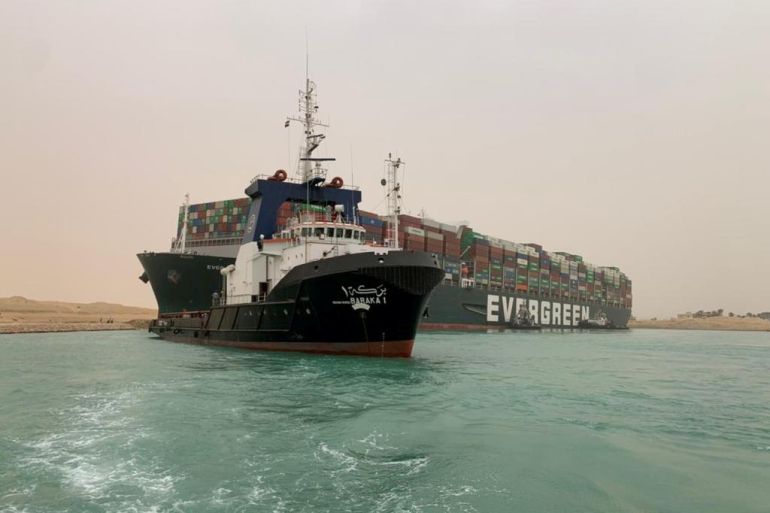Egypt’s Suez Canal: A history of the key route
Here is a look back at stages in the enlargement of the key waterway for international maritime trade.

Egypt’s Suez Canal, where frantic efforts were being made on Wednesday to free a giant container ship, opened 150 years ago.
Since then, it has been regularly expanded and modernised and today is capable of accommodating some of the world’s largest supertankers.
Keep reading
list of 3 itemsSuez canal blockage sends oil prices rebounding after sell-off
Suez Canal blocked after massive container ship runs aground
Here is a look back at key stages in the enlargement of the waterway, which handles roughly 10 percent of international maritime trade.
Beginnings
When the sea-level canal was first opened in 1869, it was 164km (102 miles) long and eight metres (26 feet) deep.
It could accommodate ships weighing up to 5,000 tonnes with a draft (measurement of the submerged part of the ship) of up to 6.7 metres (22 feet), which was the bulk of the world’s fleet at the time, according to the Suez Canal Authority.
In 1887, the canal was modernised to allow navigation at night, which doubled its capacity.
Growth in the 1950s
It was not until the 1950s that the waterway was substantially expanded, deepened and lengthened, following demands from shipping companies.
By the time it was nationalised by Egypt’s President Gamal Abdel Nasser in 1956, it was 175km (109 miles) long and 14 metres (46 feet) deep, and could take tankers with a capacity of 30,000 tonnes and a draft of up to 10.7 metres (35 feet).
21st century
A major expansion in 2015 took the length of the waterway to 193.30km (120 miles) and its depth to 24 metres (79 feet).
It meant that the canal could handle supertankers with a capacity of 240,000 tonnes, some of the biggest in the world, with a draft of up to 20.1 metres (66 feet) deep in the water.
In 2019, approximately 50 ships used the canal daily, compared with three in 1869.
Traffic is expected to almost double by 2023, with two-way circulation also reducing waiting times, the authority says.
Fastest route
The majority of oil transported by sea passes through the Suez Canal, which is the fastest crossing from the Atlantic Ocean to the Indian Ocean via the Mediterranean and Red Seas, but it demands hefty passage tolls.
The journey between ports in the Gulf and London, for example, is roughly halved by going through Suez – compared with the alternate route around the southern tip of Africa.
Most of the cargo travelling from the Gulf to Western Europe is oil. Manufactured goods and grain also pass through the canal often between Europe and North America and the Far East and Asia.